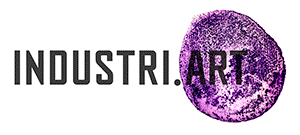

Solbes Arjona
ART-BEHAVIOR
On the day when Baudelaire was recognized as an accursed poet, modernity forcefully arrived in Europe. It exposed the ambiguity of creation, genius, the process, and above all, of the spectator. There was a bourgeoisie uncomfortable with the possibility of seeing beauty in all the lyrics, music, and colors that were now giving voice to the "others".
In the same way, Solbes Arjona flees from stale academicism and figurative images to experiment, through color, with the essence of creation. Through the energetic strokes, he develops, in a natural and primitive way, the primitive genius that opposes the most Kantian and Cartesian formalism, emulating the Dadaist phonetic poems.
Arjona's abstraction, far from being at the level of the essential abstract expressionism of Pollock and the formal purity defended by Greenberg, emanates from an ancestral Mediterranean heritage. The legacy of Venetian coloring is present in his work, through the powerful colors blended with the letters that create synaesthetic works of unprecedented musicality and colorful expression. Textuality plays an important role where, as if at random, verbs become nouns and adjectives, subjects. The strokes are supported by words with a chaotic, unexpected meaning that questions the viewer's familiarity and imaginary.
Arjona creates colors, creates thick shapes that penetrate the viewer's gaze, and reaches the feelings with small, forceful phrases, which emanate from a modern and, at the same time, basic thought, reminiscent of the Situationism of France in the 1960s and the radicalism of Tzara and Ball's cries.
We are not dealing with a painter, we are dealing with a multifaceted genius who creates, with color and letters, synaesthetic worlds with a transgressive accent to show the absurdity of the world around him. In the purest style of Huelsenbeck or Grosz, the creative process seeks the singularity and creative unconsciousness of the child uncontaminated by the social and cultural imaginary, while a Tolstoyan veil reminds us of the impossibility of liberation from history, from the context, from the horror of the enveloping emptiness.
It is precisely this horror that, through his poems, through his lyrics that swarm like fireflies amid color, declaims and confronts the spectator with the crudest reality, recalling the ancestral power struggle denounced by Foucault. Arjona has gone through the Lacanian mirror, he has already looked enough in that empty mirror where the modern subject faces his great fears, the mirror has been broken and the fears, in the form of devastating and radically realistic words, travel loose to show themselves naked to the spectator.
The most synaesthetic dichotomy is served; the game and the child's virginal look at the creative process face to face with the crudest reality of the words that point out the culprits of social poverty. The modernity of painting liberated from figuration and the vast legacy of the Mediterranean, from the Iberians to the Venetian colors, the purest existentialism through abstraction, and the essential color in front of the clearest and most forceful letter. The Dionysian process and the formalism of the word. From the introspection of solitary creation to the global significance of the common vision of the "Others". All this is Solbes Arjona.
Elisa Guillem


